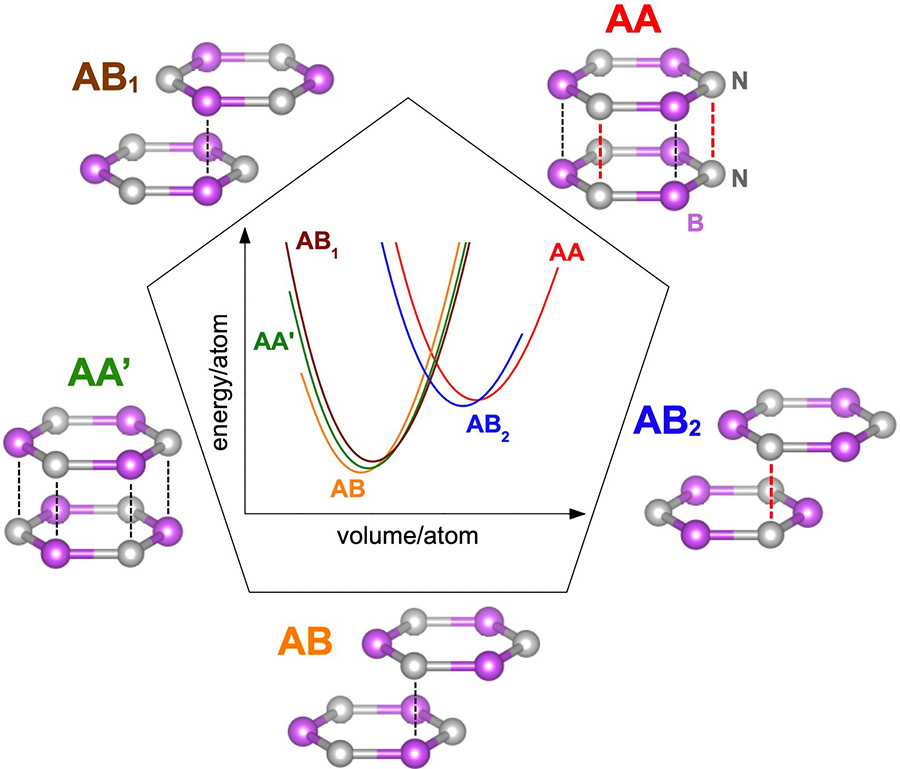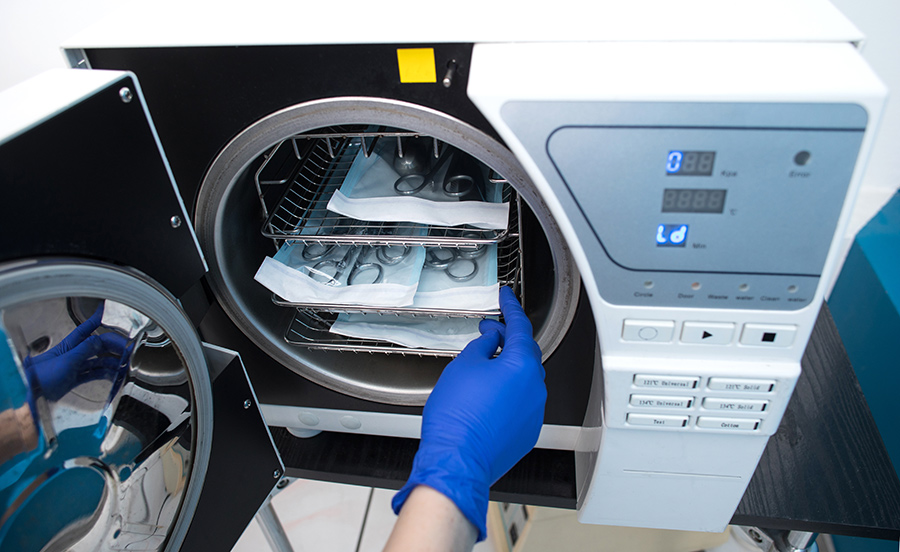- A completely unique material, boron nitride has many useful industrial and electronic applications.
- Boron nitride crystals have layered structures, but the layers can be stacked in multiple ways.
- These different structural variants have various and specific applications.
- Professor Bernard Gil, Director of Research, French National Centre of Scientific Research (CNRS), Professor Guillaume Cassabois, Montpellier University, France, Professor James Howard Edgar, Kansas State University, USA, and collaborators examine how different types of boron nitride can be exploited for emerging quantum information technologies.
Boron nitride (BN) was first synthesised in 1842 as a powdery solid and is characterised by a layered honeycomb structure resembling graphite, micas, and other semiconductor materials. In its most common form, BN consists of layers of hexagonal units made of alternating atoms of boron and nitrogen. Commonly known as ‘white graphite’, hexagonal BN is a man-made ceramic that has excellent high-temperature stability and lubricating properties. While the two-dimensional honeycomb structure of BN is uniform across the individual layers, each layer can be stacked in different ways along the vertical direction; these different stackings of three-dimensional BN structures are referred to as polytypes. Most physical properties of BN, such as the hardness and density of its crystals, are consistent between different polytypes. Other properties, however, are affected by polytypism. It has been observed, for example, that piezoelectricity, the generation of an electric potential when a crystal is subject to mechanical pressure, can be present in some BN polytypes – but not others.

of ensembles of two-layer 6-ring BN. Nitrogen atoms shown in grey, boron atoms in magenta.
Professor Bernard Gil, Director of Research at the French National Centre of Scientific Research (CNRS), Professor Guillaume Cassabois at Montpellier University, France, Professor James Howard Edgar, Kansas State University, USA and their collaborators investigate the optimal conditions to control the production of different layered BN polytypes by fine-tuning the crystal growth conditions. The researchers aim to produce high concentrations of specific BN polytypes, which can be used to make electronic devices that can operate at high power in harsh environments and optoelectronics that emit or absorb light at frequencies lower than 200nm. Such devices are ideally suited for many technological applications, including environmental sensors, water purification systems, sterilising medical equipment, and quantum information technologies.
Scientists are in pursuit of solid-state materials capable of efficiently emitting light of very short wavelengths.
Boron nitride crystalline layers: staggered stackings
The researchers have described five different polytypes for hexagonal BN (hBN) crystals. In the geometrically simplest polytype, the 6-rings of alternating boron and nitrogen atoms are perfectly stacked along the vertical direction of the crystal, with every atom in each hexagonal unit facing similar ones in the two planes sitting above and below. This particular stacking is energetically unstable since the nitrogen-nitrogen and boron-boron interactions result in electrostatic repulsion. In a much more stable polytype (AA’-hBN), the alternating planes experience a 60° twist from one another, causing the boron and nitrogen atoms in adjacent layers to come closer and reduce the inter-layer distance due to electrostatic attraction (figure 1). The researchers also identified three other staggered stackings corresponding to three more hexagonal BN polytypes.

The most interesting polytype among the three ‘staggered stackings’ is referred to as the Bernal AB-stacking (AB-hBN). AB-hBN is obtained by gliding the atomic planes so that half of the boron and nitrogen atoms of adjacent planes face each other, and the other half are placed at the centre of the 6-ring hexagonal units of the layers above and below. The AB-hBN polytype has a structure similar to that of graphite and is particularly sought after for its optical properties. The researchers grow hexagonal BN crystals by heating the source materials to 1550°C and then slowly cooling them, causing crystals to form on the molten surface. The team enriches BN crystals with the AB-hBN polytype by adding high concentrations of graphite to the crystal growth solution.

polytypic BN sample.
Efficient deep UV emitters
BN is a versatile material with many interesting physical properties. One of its most important characteristics is the ability to interact with – and control – electromagnetic radiation. Scientists are in pursuit of solid-state materials that are capable of emitting light of very short wavelengths (less than 250nm) efficiently and with minimal energy consumption. Gil and Cassabois demonstrated that when AB-hBN crystals are irradiated with light at 406nm, they can emit an intense signal at 203nm, in the deep ultraviolet (UV) region of the electromagnetic spectrum, via a phenomenon known as Second Harmonic Generation (SHG).
BN really is one of the “Swiss knives” for generating exciting new properties artificially.
Many engineers around the globe would agree that the production of light-emitting devices operating in the deep UV is fundamentally important for the future of technology. Not only would UV emitters enable the operation of sensors for the study of nucleic acid (DNA and RNA) light absorption, but the intense emission could be used in sterilising devices and disinfection tools to kill viruses and pathogenic bacteria. The teams and their network of international collaborators discussed the polytype-specific SHG deep UV emission in a study published in 2022. The researchers continue to investigate the different growth conditions that could enable the production of artificial polytypes of crystalline BN. ‘BN really is one of the “Swiss knives” for generating exciting new properties artificially’, say Gil, Cassabois, and Edgar. ‘What polytypism in BN has to offer cannot be neglected, and it deserves to be studied in depth’, add the researchers, pointing out how a variety of polytypes in other materials, such as silicon carbide, has brought an assortment of advanced industrial applications.

What steps are needed for the many applications of boron nitride to become economically viable?
To escape out of research laboratories, the science of boron nitride for the advanced application of information technologies and quantum technologies requires the development of growth methods for producing material with high crystallographic quality and controlled residual doping, in industrial amounts. Epitaxial growth methods offer a complementary solution to the growth of bulk material giving today’s best material.
What are your future research plans?
It is important to continue improving the yield SHG emission in non-centrosymmetric polytypes, which requires controlling the growth of the different polytypes.
Vincent Jacques and Aurore Finco have recently demonstrated in Montpellier the interest of BN for both quantum technologies and magnetic nano-sensors. In particular, they plan to use BN isotopically purified with B10 and N15 isotopes, paving the way to future fertile fields of investigation.

















